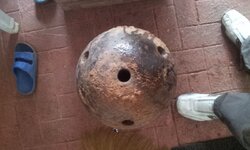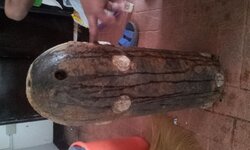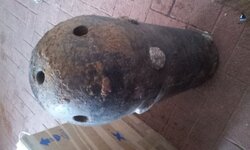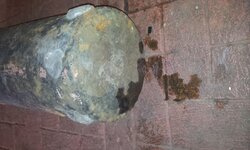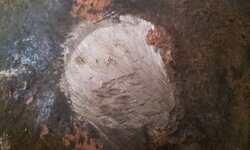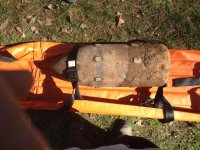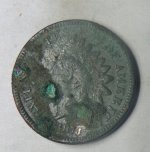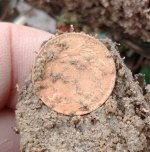I found this today.. its looks like a WW2 bomb but upon careful checking there is are holes on the head and there are small welded
round objects on side. the hole on the top most part is through and through until to the bottom.. it has a hollow body but the head
too heavy.. its almost 60kgs..
round objects on side. the hole on the top most part is through and through until to the bottom.. it has a hollow body but the head
too heavy.. its almost 60kgs..


